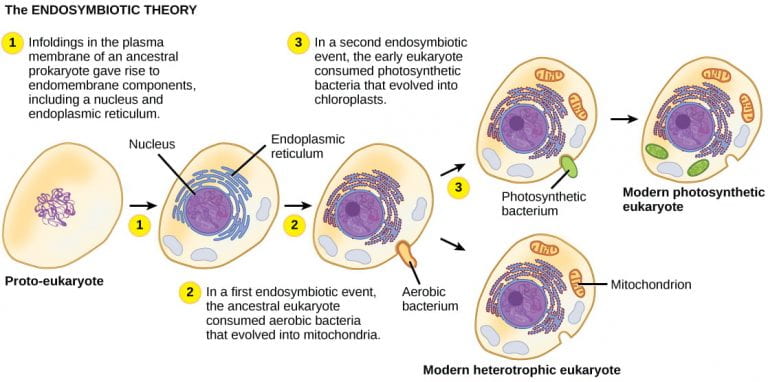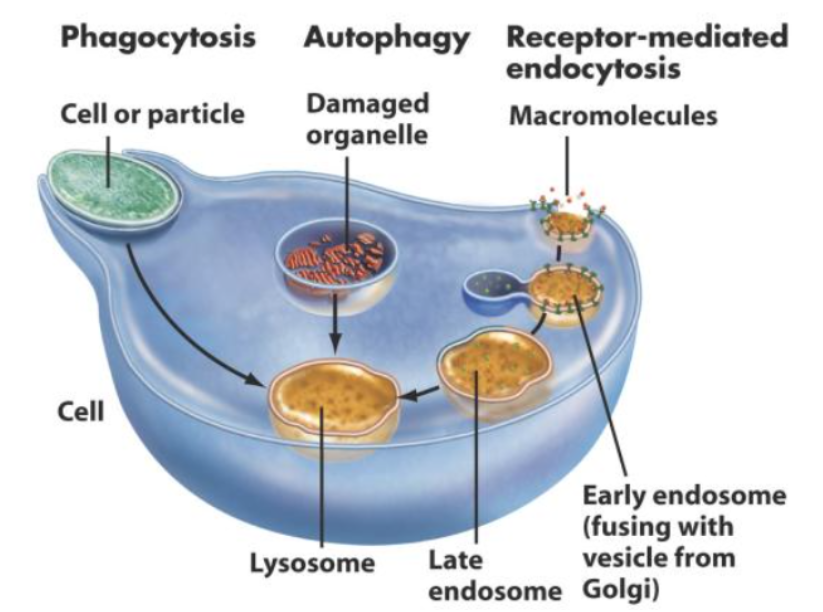Origins of Cell Compartmentalization Study Guide
Introduction
The hypothesis that evolution was universal was initially dismissed. People questioned whether humans were connected to the Great Apes, but Charles Darwin himself had difficulty linking the complex existence that humans lead back to the earliest single-celled organism! However, science has gone a long way since Darwin first sailed the world’s waters aboard the H.M.S Beagle.
Endosymbiotic theory
We can now readily connect humans and single-celled creatures using modern microscopy, genetic research, and decades of meticulous observation. This overview starts at the beginning of the narrative when cells first became segregated and performed intricate roles. This is known as the endosymbiotic theory.
- The endosymbiotic theory examines the beginning of this journey when the earliest cells began to alter due to natural selection.
- To completely comprehend the endosymbiotic idea, you must first comprehend the concept of symbiosis.
- Symbiosis refers to a relationship between two species, and there are three types: → Both species benefit from a mutualistic connection→ One organism benefits while the other remains unaffected in a commensal relationship→ The parasite profits while the other creature suffers in a parasitic relationship
Similarities and differences in compartmentalization between prokaryotic and eukaryotic cells
- In organisms, compartmentalization results in the capacity to simultaneously perform catabolic and anabolic responses.
- In other words, if organisms can divide sections of their cells, they will be far more effective in gathering nutrition, growing, and reproducing.
- Because all creatures compete for resources, species that can compartmentalize their cells can reproduce more quickly.
- While eukaryotic cells have several membrane-bound organelles that generate various compartments, prokaryotic cells also have compartmentalization techniques.
- Prokaryotic cells may compartmentalize distinct sections of their cytoplasm, utilizing proteins to complete anabolic and catabolic events in separate places, in addition to creating a chamber around themselves in the periplasmic space. The endosymbiotic idea relies heavily on compartmentalization.
Endosymbiotic idea
While we’ll get to the full list of evidence for the endosymbiotic idea shortly, one of the most compelling pieces of evidence that these organelles were once free-living animals is that they both had strands of circular DNA – much like modern-day bacterial cells! Despite the fact that this genome is significantly smaller than a bacterial genome, it is hypothesized that it transmitted certain genes to the eukaryotic nucleus when endosymbionts coordinated their cell division with the host cell while losing other genes that were no longer needed for life.
The endosymbiotic idea is supported by a significant amount of data. This, however, was not always the case. Konstantin Mereschkowski, a Russian scientist, proposed the hypothesis for the first time in 1901. Until the 1960s, when evolutionary biologist Lynn Margulis provided a huge amount of microbiological data, the notion remained mainly undetected.
- The similarities between diverse organelles and live bacteria are one of the most crucial pieces of evidence. While evolution modifies some animals, it leaves others largely unchanged from billions of years ago.
- The nucleus of eukaryotic creatures, for example, resembles the simple membranes generated by certain planctomycetes bacteria.
- These organelles and bacteria are superficially related, but DNA evidence and comparable biological macromolecules connect them further.
- Both mitochondria and bacterial cells, for example, contain almost similar integral membrane proteins and lipids in their membranes.
- Similar to how certain cyanobacteria have a peptidoglycan cell wall, some eukaryotic algae species’ chloroplasts have kept this peptidoglycan cell wall.
- Cell division provides the final piece of evidence supporting the endosymbiotic idea.
- Though eukaryotic cells divide through the process of mitosis, mitochondria and chloroplasts divide through the process of binary fission.
- Furthermore, if you remove the chloroplasts or mitochondria from a cell, the cell cannot recreate those organelles — since the organelles contain a big percentage of their own DNA!
Conclusion
- We address the evolutionary mechanisms that work on the genetic foundation of intracellular compartments and how they differ among life domains.
- We conclude that the difference between eukaryotes and prokaryotes is no longer determined by the presence of a compartmentalized cell design but rather by its complexity.
FAQs:
1. What is cell compartmentalization, and why does it occur?
Cell compartmentalization describes how organelles in eukaryotic cells live and work in distinct parts of the cell to accomplish their respective duties more efficiently.
2. How did compartmentalization evolve in eukaryotes?
Internal membranes of eukaryotic cells divide the cell into specialized areas. Endosymbiotic endosymbiosis led to the evolution of membrane-bound organelles from previously free-living prokaryotic cells.
3. What is meant by the term cellular compartmentalization?
Cell compartmentalization describes how organelles in eukaryotic cells live and work in distinct parts of the cell to accomplish their respective duties more efficiently.
4. What is the evidence of Endosymbiotic theory?
Numerous lines of evidence exist, including the fact that mitochondria and chloroplasts have their own circular DNA (prokaryotes also have circular DNA), mitochondria and chloroplasts have a double membrane (the inner membrane would have initially been the single membrane of the ingested prokaryote, and the outer membrane would have initially come from the cell that engulfed it), mitochondria and chloroplasts have 70S ribosomes (prokaryotes 70S have ribosomes, whereas eukaryotes have 80S ribosomes).
5. What does compartmentalization mean?
Cellular compartments in cell biology refer to all of the closed regions of a eukaryotic cell’s cytoplasm that are normally covered by a single or double lipid layer membrane. The process of forming cellular compartments is known as compartmentalization.
6. Why is compartmentalization a fundamental principle of all forms of life?
Compartmentalization in eukaryotic cells is primarily concerned with efficiency. The development of distinct microenvironments within a cell is enabled by dividing the cell into separate portions. As a result, each organelle will have all of the benefits it requires to work at the best of its capacity.
We hope you enjoyed studying this lesson and learned something cool about the Origins of Cell Compartmentalization! Join our Discord community to get any questions you may have answered and to engage with other students just like you! Don’t forget to download our App to experience our fun VR classrooms – we promise it makes studying much more fun! 😎
Sources:
- Origin and evolution of metabolic sub-cellular compartmentalization in eukaryotes. https://www.sciencedirect.com/science/article/pii/S0300908415000905. Accessed 17 Dec, 2021.
- The Evolution of Cellular Compartmentalization. https://learn-biology.com/cells-and-organelles-main-menu/the-evolution-of-compartmentalization/. Accessed 17 Dec, 2021.
- Evolutionary origins of metabolic compartmentalization in eukaryotes. https://www.ncbi.nlm.nih.gov/pmc/articles/PMC2817231/. Accessed 17 Dec, 2021.
- Origins of Cell Compartmentalization. https://biologydictionary.net/ap-biology/2-11-origins-of-cell-compartmentalization/. Accessed 17 Dec, 2021.


